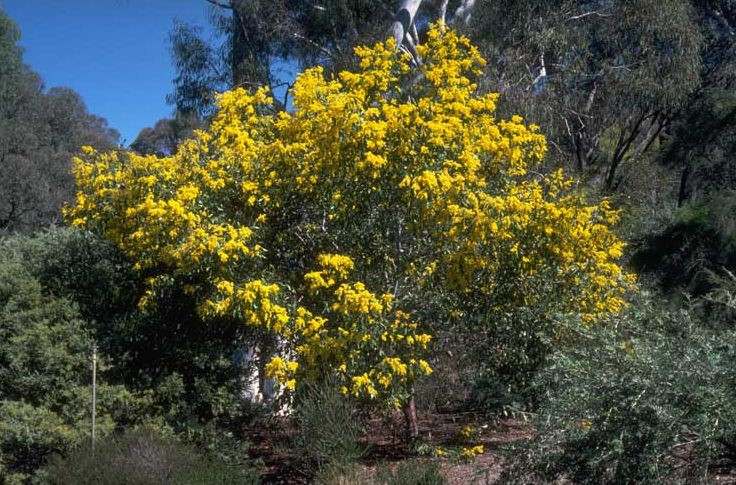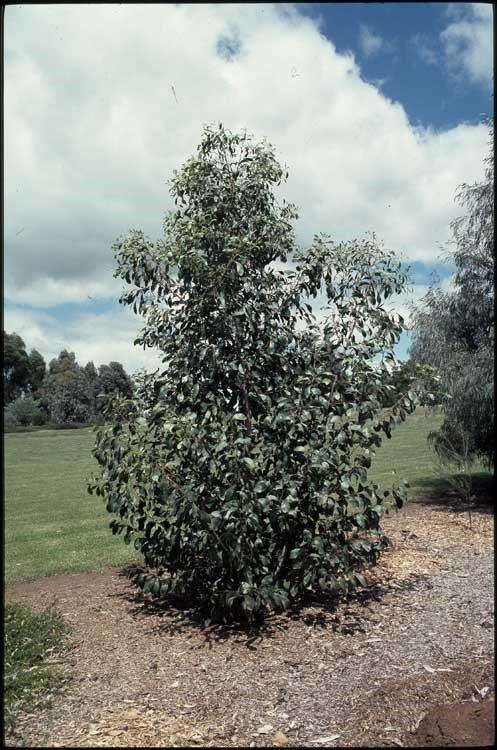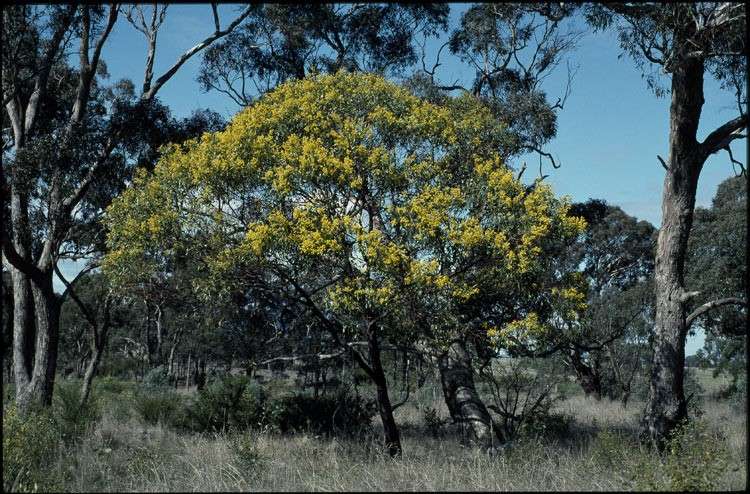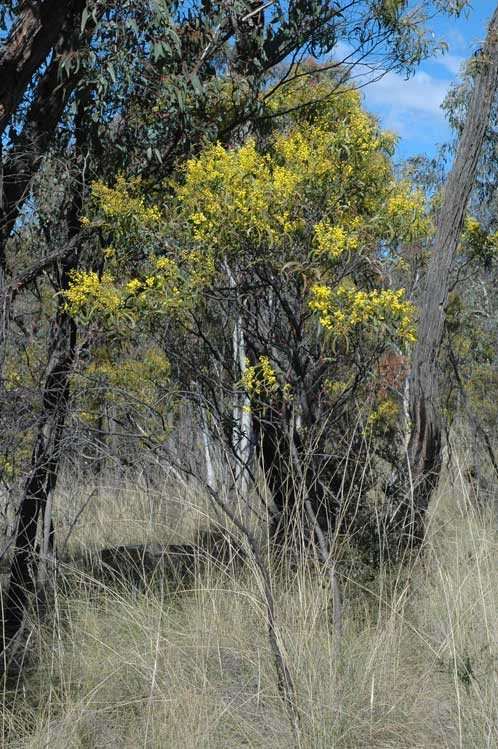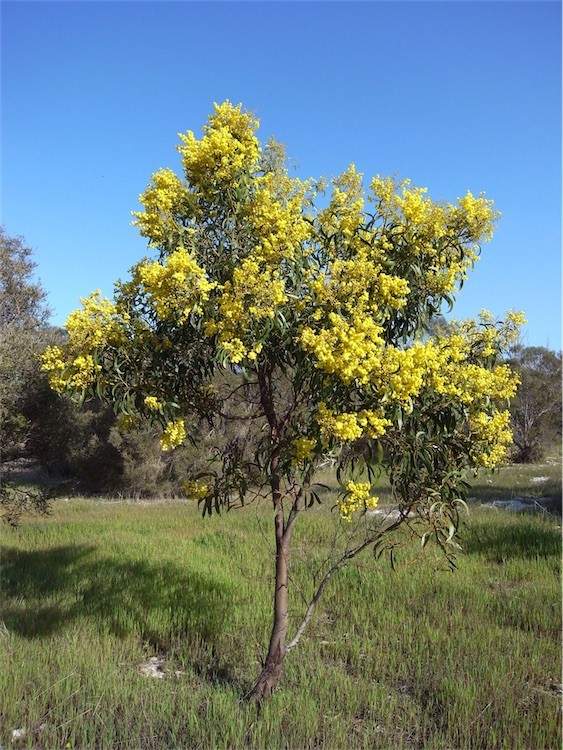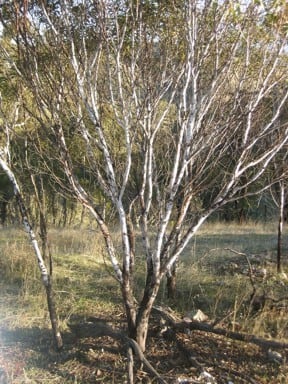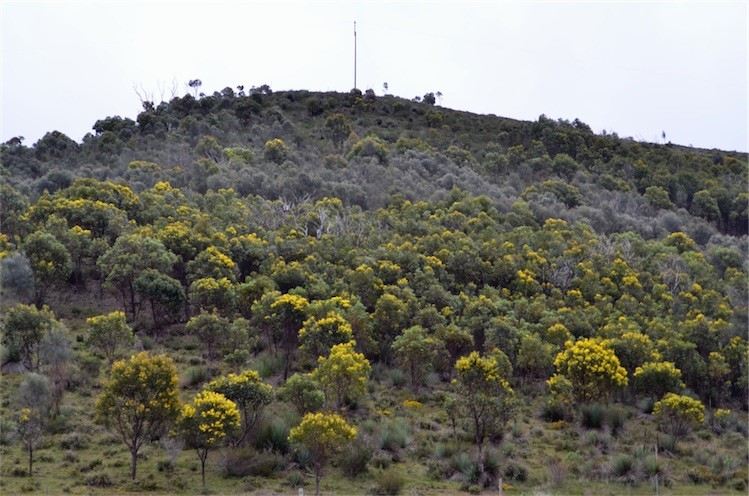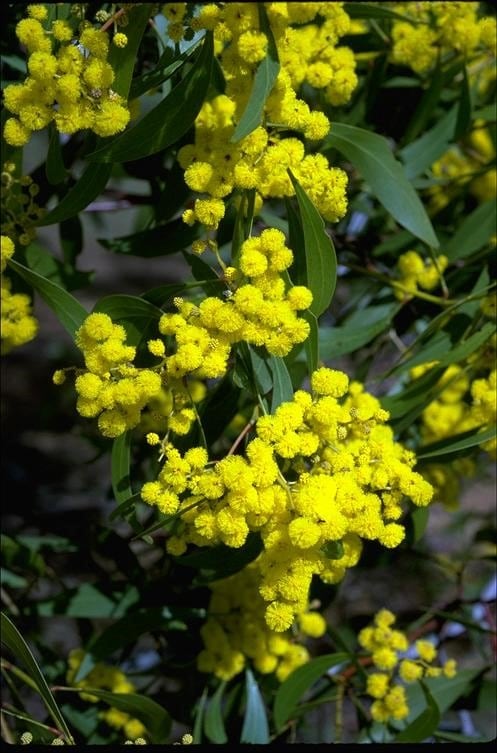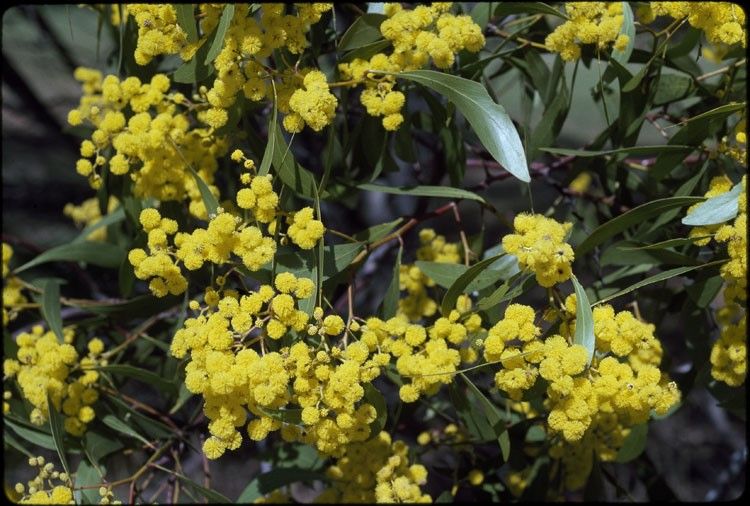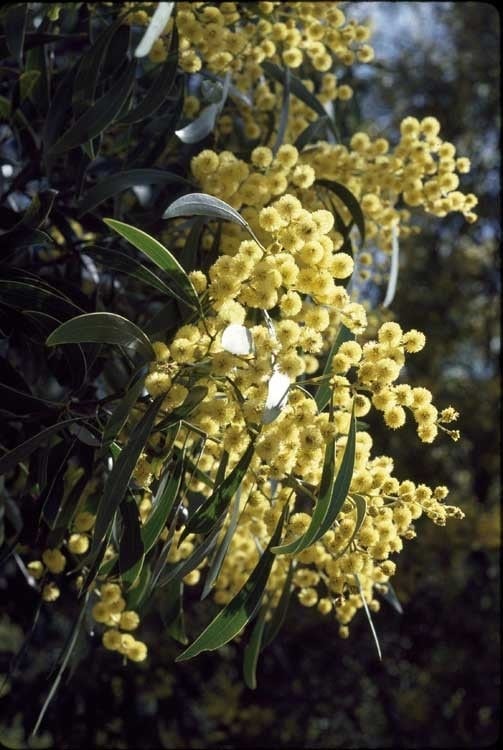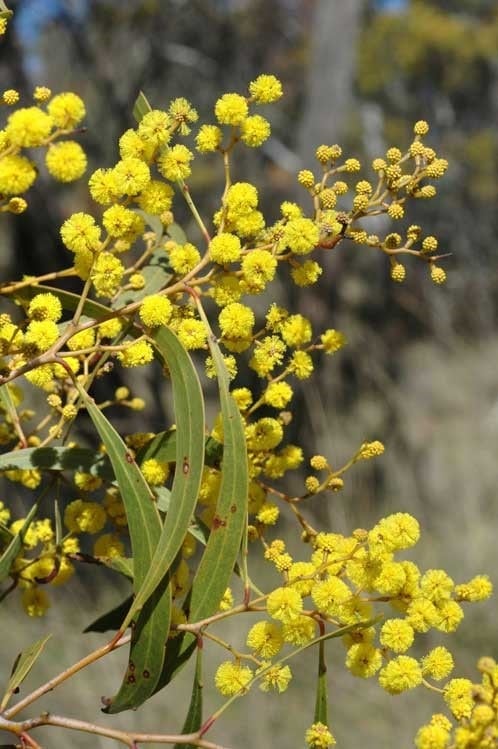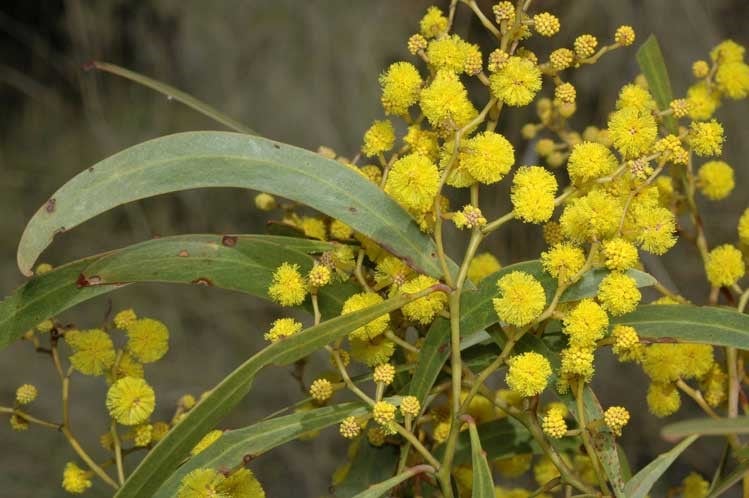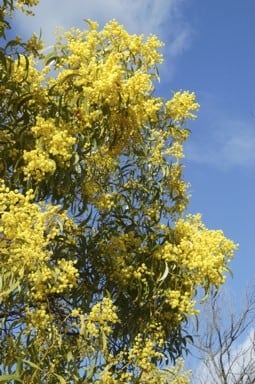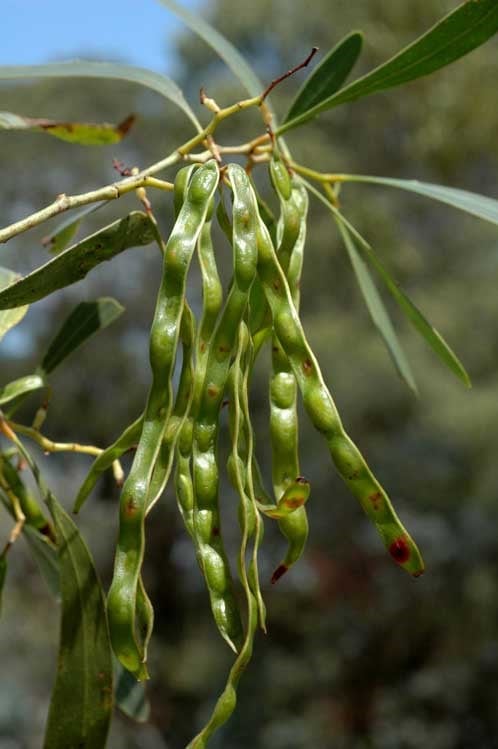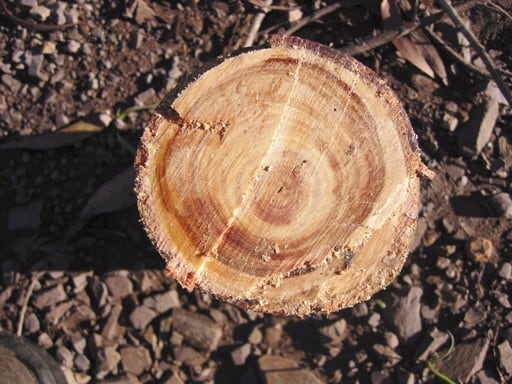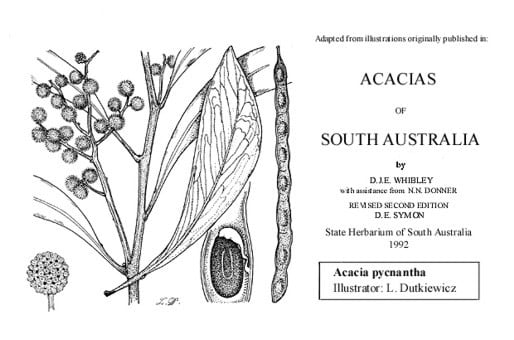Acacia pycnantha Benth.
WATTLE
Acacias of Australia
Common Name
Golden Wattle, Broad-leaved Wattle
Family
Fabaceae
Distribution
Widespread and often locally common in Vic., extending W to the Flinders Ra., Yorke Peninsula, southern Eyre Peninsula and Kangaroo Is., S.A.; isolated occurrences in southern N.S.W. and also from the Broken Hill area; near Canberra in the A.C.T. Naturalised in south-western W.A. and eastern Tas.; regarded as a weed species in parts of South Africa.
Description
Shrub or tree usually 3–8 m high. Branchlets sometimes pruinose, glabrous. Phyllodes often pendulous, falcately recurved to oblanceolate, pulvinus 4–7 mm long, much-narrowed at base, 8–15 (–22.5) cm long, (4–) 10–35 (–52) mm wide, obtuse to acute, coriaceous, glabrous, with prominent midrib, penninerved; gland often slightly exserted, sometimes 2, with the lowermost 3–45 mm above pulvinus. Inflorescences racemose; raceme axes mostly 2–9 cm long, stout, glabrous; peduncles (2–) 3–6 mm long, stout, glabrous; heads showy, globular to obloid, densely 40–80-flowered, bright golden, sometimes lemon yellow; bracteoles evident in buds; laminae subcircular, < 0.5 mm diam., dark brown to blackish, white-fimbriolate. Flowers 5‑merous; sepals united. Pods linear, 5–13 cm long, 5–7 (–8) mm wide, firmly chartaceous to thinly coriaceous, glabrous. Seeds longitudinal, ±oblong, 5.5–6 mm long, somewhat shiny, black; aril clavate.
Habitat
Grows in sand or loam, in Eucalyptus forest or woodland, open scrub and heath.
Specimens
S.A.: Burra Ck gorge, 3 km W of Worlds End, B.R.Maslin 5993 (AD, PERTH); Alligator Ck, c. 45 km SE of Port Augusta, R.Hill 1027 (AD). N.S.W.: 8.7 km ENE of Bredbo on the Jerangle road, R.Coveny 5449 (MEL, NSW). A.C.T.: Mt Ainslie, Canberra, M.Gray 6437 (CANB, NSW). Vic.: between Benalla and Glenrowan, N.Hall H79/99 (MEL, NSW, PERTH).
Notes
Acacia pycnantha is the official floral emblem of Australia.
A fast growing, rather short-lived, somewhat frost-sensitive species which is widely planted as an ornamental, especially on account of its profusion of strongly perfumed, golden flower-heads. A pendulous variant and a pale-headed variant are known in cultivation, fide W.R.Elliot & D.L.Jones, Encycl. Austral. Pl. 2: 103 (1982). The species is an environmental weed in South Africa, fide C.H.Stirton (1978), Plant Invaders 56-59 (Dept. Nature & Environmental Conservation, Cape Town). Further information on the biological and ecological features, and the utilisation potential, of this species is given in B.R.Maslin and M.W.McDonald, AcaciaSearch: Evaluation of Acacia as a woody crop option for southern Australia, RIRDC Publication No. 03/017, 160–165 (2004).
A somewhat variable species. It is normally a tall shrub or tree, but small, spindly forms which flower when 0.5–1 m high sometimes occur (e.g. some plants in the Bendigo ‘Whipstick’ forest, Vic.). Plants with pruinose branches are scattered throughout the range (e.g. the most northerly populations in S.A.). L.F.Costermans, Native Trees & Shrubs SE Australia 317 (1981), records two forms for Vic., namely, plants from open forests with dark green shiny phyllodes and golden flower-heads, and plants from mallee areas with paler, dull, narrower phyllodes and paler coloured flower-heads.
Putative natural hybrids between A. pycnantha and A. williamsonii occur in the Bendigo ‘Whipstick’, Vic. (e.g. B.R.Maslin 5852, MEL, PERTH). These hybrids superficially resemble A. hakeoides. Other putative hybrids of cultivated origin involving A. podalyriifolia are noted under A. podalyriifolia.
Sometimes confused with A. obliquinervia, A. leiophylla or A. saligna.
The bark is one of the richest sources of tannin in the world, although it is now rarely used commercially; the timber is tough and close-grained; the gum was eaten by Aborigines (see G.M.Cunningham et al., Pl. W New South Wales 370 (1981) for references).
The allied species A. pedina from the South Coast of N.S.W. has dimorphic phyllodes with the adult ones generally straighter than those of A. pycnantha, and heads with normally fewer flowers, see P.G.Kodela & T.M.Tame, Telopea 8: 308 (1999) for discussion.
FOA Reference
Data derived from Flora of Australia Volumes 11A (2001), 11B (2001) and 12 (1998), products of ABRS, ©Commonwealth of Australia
Author
Minor edits by B.R.Maslin & J.Rogers
B.R.Maslin
This identification key and fact sheets are available as a mobile application:
URL: https://apps.lucidcentral.org/wattle/
© Copyright 2018. All rights reserved.
